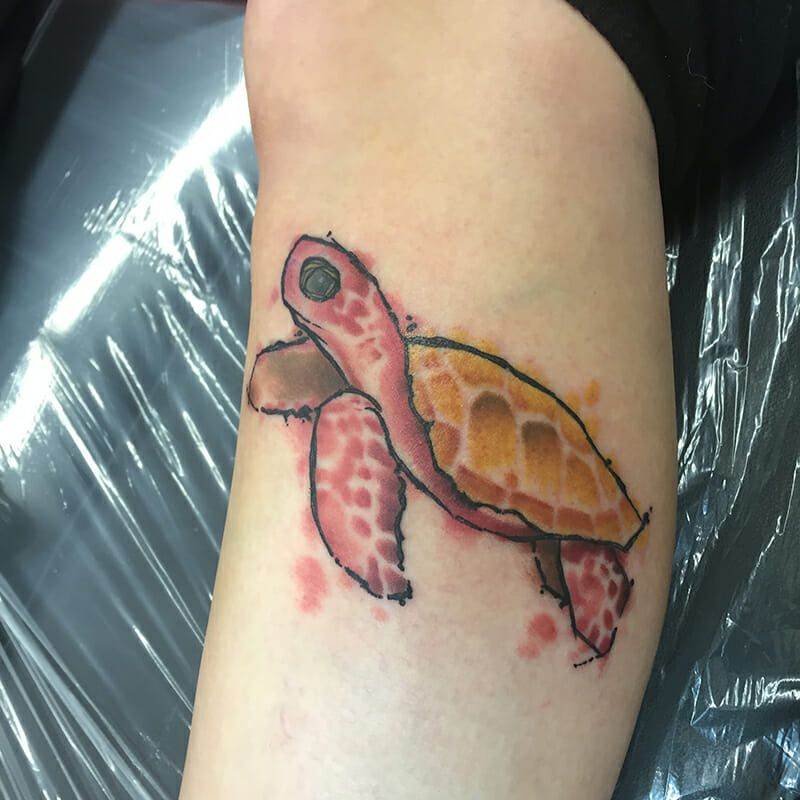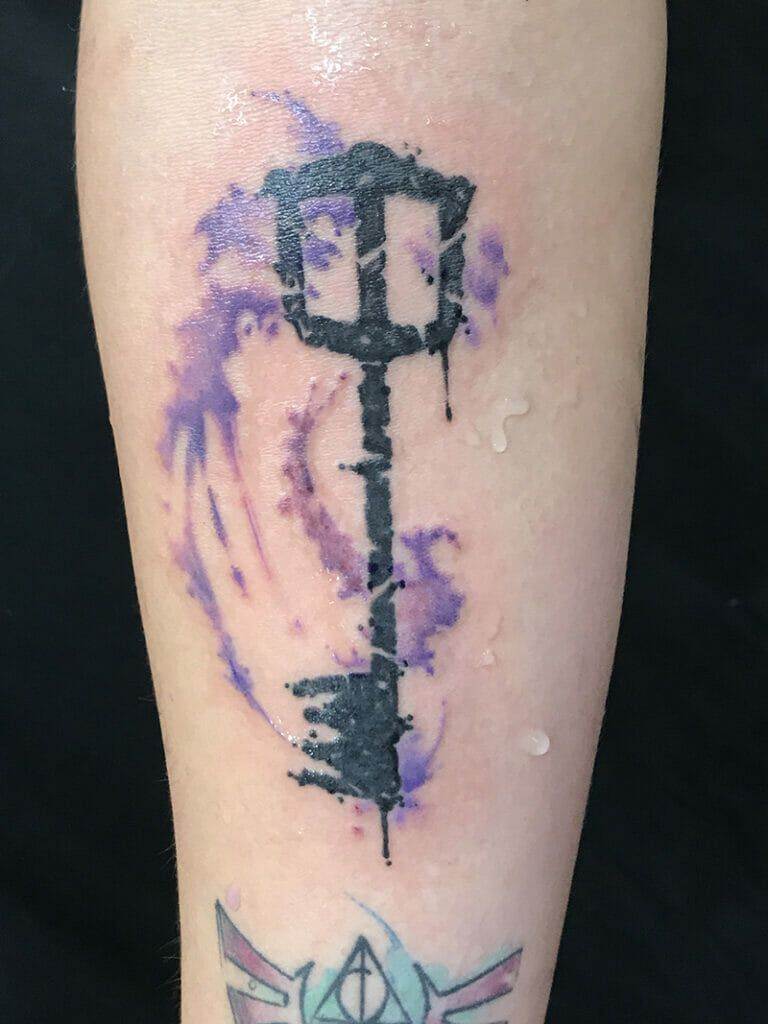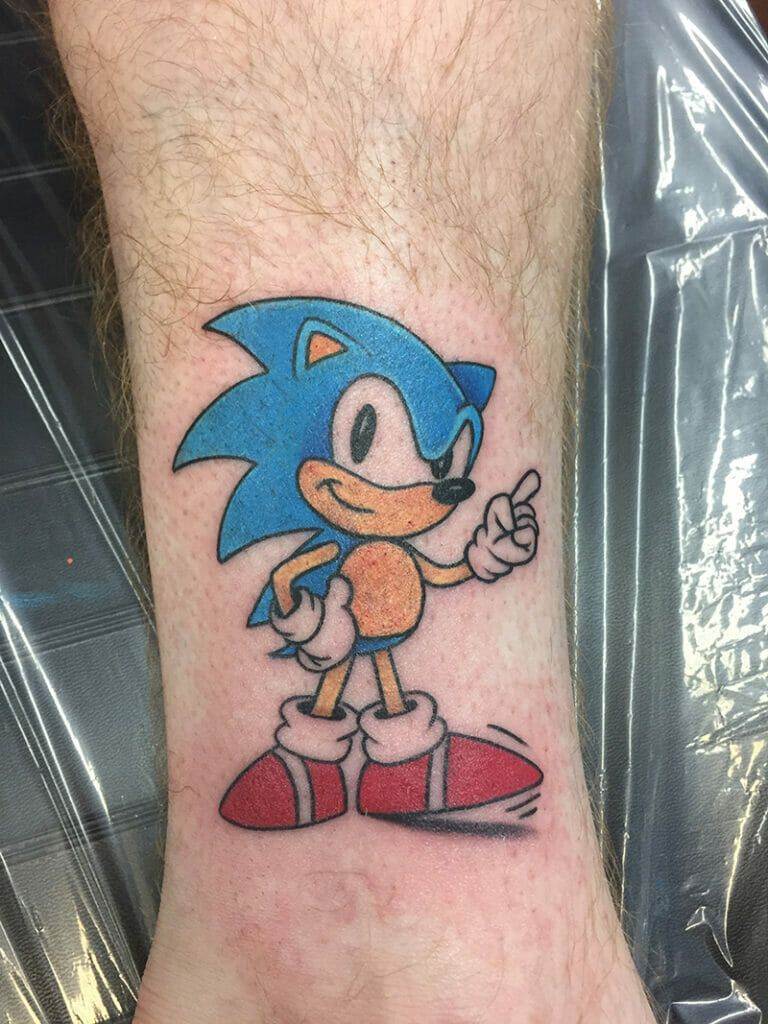Tattooing has been practiced for thousands of years, with evidence of its existence dating back to ancient civilizations such as the Egyptians and the Greeks. Over time, tattooing has evolved from a cultural and symbolic practice to a form of personal expression and body art. In recent years, a new trend has emerged in the world of tattoos – watercolor tattoos. These vibrant and ethereal designs have gained popularity for their unique aesthetic and ability to create stunning works of art on the skin.
Watercolor tattoos are a relatively new addition to the world of body art, but they have quickly gained a dedicated following. Unlike traditional tattoos that use bold lines and solid colors, watercolor tattoos mimic the fluid and translucent qualities of watercolor paintings. They often feature soft edges, delicate brushstrokes, and a wide range of colors that blend seamlessly together. This style of tattooing allows for a more artistic and painterly approach, resulting in designs that resemble actual watercolor paintings on the skin.
What are Watercolor Tattoos and How are They Created?
Watercolor tattoos are a style of tattooing that mimics the appearance of watercolor paintings. They are created using a similar technique to traditional tattoos, but with some key differences. Instead of using bold lines and solid colors, watercolor tattoos utilize softer edges and a more translucent color palette. This creates a dreamy and ethereal effect that is reminiscent of actual watercolor paintings.
The process of creating a watercolor tattoo involves several steps. First, the tattoo artist will sketch out the design on paper or directly onto the skin. Once the design is finalized, the artist will begin tattooing using a combination of techniques such as shading, blending, and layering. Instead of using traditional tattoo ink, watercolor tattoos often use diluted pigments to achieve the desired effect. This allows the colors to blend and flow together, creating a more organic and painterly appearance.
In terms of materials, watercolor tattoos require a different set of tools compared to traditional tattoos. Tattoo artists may use different types of needles, such as round shaders or magnum shaders, to achieve the desired effect. They may also use a variety of pigments and inks that are specifically formulated for watercolor tattoos. These pigments are often more diluted and translucent, allowing for a softer and more vibrant color palette.
The Unique Aesthetic of Watercolor Tattoos: Why They Stand Out
One of the main reasons why watercolor tattoos have gained popularity is their unique aesthetic. Unlike traditional tattoos that rely on bold lines and solid colors, watercolor tattoos have a softer and more ethereal quality. The colors blend seamlessly together, creating a dreamy and almost otherworldly effect on the skin.
The watercolor effect is achieved through the use of diluted pigments and a specific tattooing technique. Instead of using traditional tattoo ink, which is highly concentrated and opaque, watercolor tattoos use pigments that are diluted with water or other liquids. This allows the colors to flow and blend together, creating a more fluid and translucent appearance.
Another aspect that sets watercolor tattoos apart is how they can enhance the natural curves of the body. The soft edges and delicate brushstrokes of watercolor tattoos can follow the contours of the body, accentuating its natural shape. This creates a more organic and harmonious look, as if the tattoo is an extension of the person’s body rather than an external decoration.
The Versatility of Watercolor Tattoos: From Delicate Florals to Bold Abstracts
One of the great things about watercolor tattoos is their versatility. They can be customized to fit any style or preference, making them suitable for a wide range of designs. From delicate florals to bold abstracts, watercolor tattoos can be adapted to suit any aesthetic.
When it comes to watercolor tattoo designs, the possibilities are endless. Some popular choices include flowers, animals, landscapes, and abstract patterns. These designs can be as simple or as intricate as desired, depending on the individual’s preference. The soft and fluid nature of watercolor tattoos allows for a more organic and natural look, making them particularly well-suited for designs inspired by nature.
In addition to their versatility in design, watercolor tattoos can also be customized in terms of color palette. The translucent and blended nature of watercolor tattoos allows for a wide range of colors to be used. From pastel hues to vibrant shades, watercolor tattoos can incorporate any color imaginable. This makes them a great choice for those who want a tattoo that is unique and personalized to their own tastes.
The Pros and Cons of Watercolor Tattoos: What You Need to Know
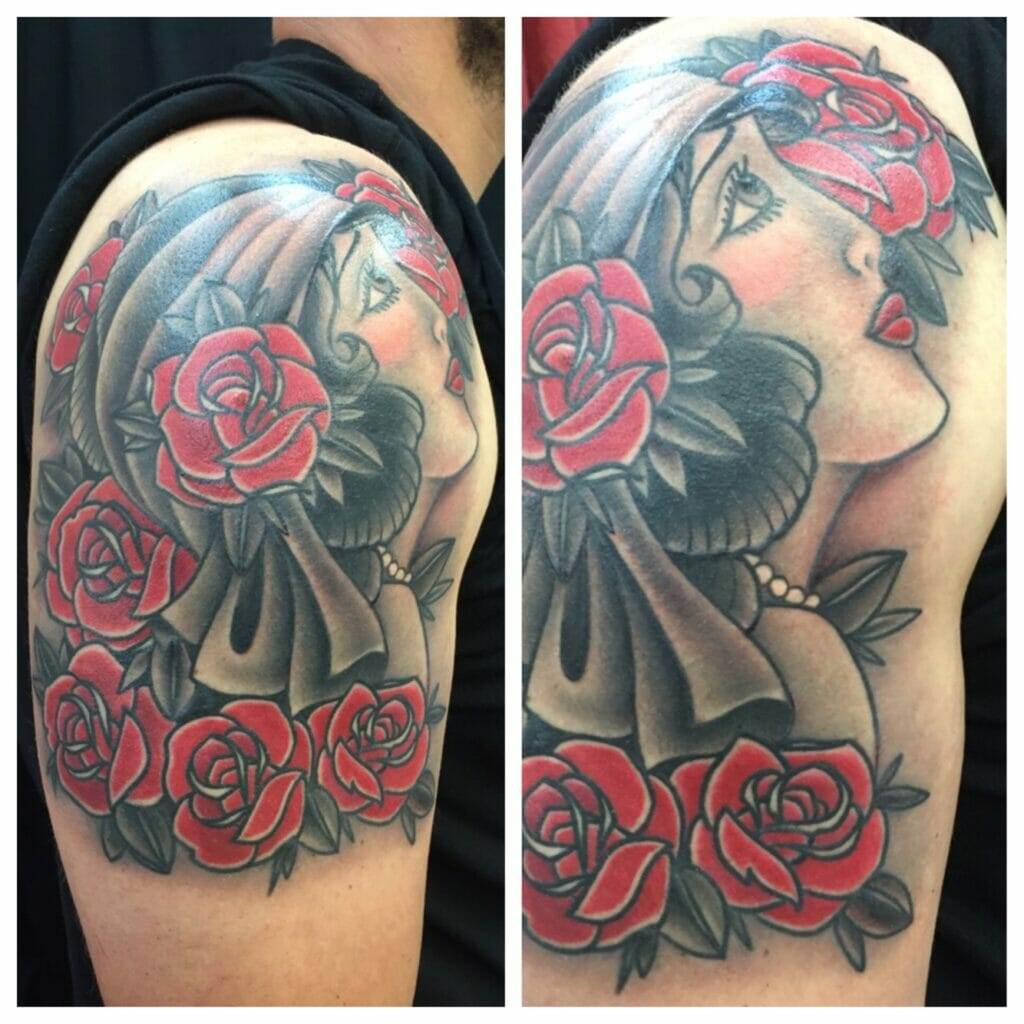
Like any form of body art, watercolor tattoos have their pros and cons. It is important to weigh these factors before getting a watercolor tattoo to ensure that it is the right choice for you.
One of the main advantages of watercolor tattoos is their unique aesthetic. They stand out from traditional tattoos and can create stunning works of art on the skin. The soft edges and delicate brushstrokes of watercolor tattoos give them a dreamy and ethereal quality that is not often seen in other tattoo styles. They also allow for a wide range of colors and designs, making them highly customizable and personalized.
Another advantage of watercolor tattoos is their versatility. They can be adapted to fit any style or preference, making them suitable for a wide range of designs. From delicate florals to bold abstracts, watercolor tattoos can be customized to suit any aesthetic. This makes them a great choice for those who want a tattoo that is unique and personalized to their own tastes.
However, there are also some potential drawbacks to consider when it comes to watercolor tattoos. One of the main concerns is their longevity. Watercolor tattoos tend to fade faster than traditional tattoos, as the diluted pigments used in the process are more prone to fading over time. This means that touch-ups may be required more frequently to maintain the vibrancy of the tattoo.
Another potential drawback is the limited number of tattoo artists who specialize in watercolor tattoos. This can make it more difficult to find a skilled artist who can create the desired watercolor effect. It is important to do thorough research and find an artist who has experience working with this style before getting a watercolor tattoo.
Watercolor Tattoos vs. Traditional Tattoos: What Sets Them Apart
Watercolor tattoos and traditional tattoos are two distinct styles of body art, each with its own unique characteristics. While both styles have their merits, there are some key differences that set them apart.
One of the main differences between watercolor tattoos and traditional tattoos is the technique used to create them. Traditional tattoos rely on bold lines and solid colors to create a clear and defined image on the skin. Watercolor tattoos, on the other hand, use softer edges and a more translucent color palette to mimic the appearance of watercolor paintings. This creates a more fluid and ethereal effect that is unique to watercolor tattoos.
Another difference is the aesthetic of the two styles. Traditional tattoos often have a more bold and graphic look, with strong lines and solid colors. Watercolor tattoos, on the other hand, have a softer and more painterly quality. The colors blend seamlessly together, creating a dreamy and almost otherworldly effect on the skin.
In terms of customization, both watercolor tattoos and traditional tattoos can be adapted to fit any style or preference. However, watercolor tattoos offer a wider range of colors and a more organic look, making them particularly well-suited for designs inspired by nature. Traditional tattoos, on the other hand, are better suited for bold and graphic designs that require clean lines and solid colors.
The Healing Process of Watercolor Tattoos: Tips for Optimal Results
The healing process of a watercolor tattoo is similar to that of a traditional tattoo, but there are some specific considerations to keep in mind to ensure optimal results.
After getting a watercolor tattoo, it is important to follow the aftercare instructions provided by your tattoo artist. This typically involves keeping the tattoo clean and moisturized, avoiding direct sunlight and excessive sweating, and refraining from picking or scratching at the tattooed area.
It is normal for a watercolor tattoo to scab and peel during the healing process. This is the body’s natural way of shedding dead skin cells and allowing new skin to form. It is important to resist the urge to pick or scratch at the scabs, as this can cause damage to the tattoo and increase the risk of infection.
During the healing process, it is also important to avoid exposing the tattoo to direct sunlight or soaking it in water for extended periods of time. Sunlight can cause the colors to fade, while excessive moisture can disrupt the healing process and increase the risk of infection.
Maintaining the Vibrancy of Watercolor Tattoos: How to Keep Them Looking Fresh
To keep a watercolor tattoo looking fresh and vibrant over time, there are a few steps you can take.
First, it is important to protect your tattoo from direct sunlight. UV rays can cause the colors to fade and dull over time. If you are going to be spending time outdoors, make sure to apply a high SPF sunscreen to your tattoo and reapply regularly.
It is also important to keep your skin moisturized. Dry skin can cause the colors in a watercolor tattoo to appear dull and faded. Use a gentle, fragrance-free moisturizer on your tattoo regularly to keep it hydrated and looking fresh.
In addition, it is important to avoid excessive sweating or soaking in water for extended periods of time. Sweat and water can cause the colors in a watercolor tattoo to bleed or fade. If you are going to be engaging in activities that may cause you to sweat or come into contact with water, make sure to protect your tattoo with a waterproof bandage or barrier cream.
Finally, regular touch-ups may be necessary to maintain the vibrancy of a watercolor tattoo. Watercolor tattoos tend to fade faster than traditional tattoos, so it is important to schedule touch-up appointments with your tattoo artist as needed.
Watercolor Tattoos and Personal Expression: How They Reflect Your Personality
One of the great things about watercolor tattoos is that they can be used for personal expression. They offer a unique and artistic way to showcase your personality and style.
Watercolor tattoos can be customized to reflect your interests, passions, or beliefs. Whether you are a nature lover, an art enthusiast, or a free spirit, there is a watercolor tattoo design out there that can capture your essence. From delicate florals to bold abstracts, watercolor tattoos can be adapted to suit any aesthetic and convey any message.
The colors and design elements chosen for a watercolor tattoo can also reflect different aspects of your personality. Bright and vibrant colors may indicate a bold and outgoing personality, while pastel hues may suggest a more soft and gentle nature. Similarly, the choice of design elements – whether it be flowers, animals, or abstract patterns – can convey different meanings and symbolize different aspects of your personality.
Ultimately, watercolor tattoos offer a unique and artistic way to express yourself and showcase your individuality. They allow you to wear your personality on your skin and create a lasting piece of art that is uniquely yours.
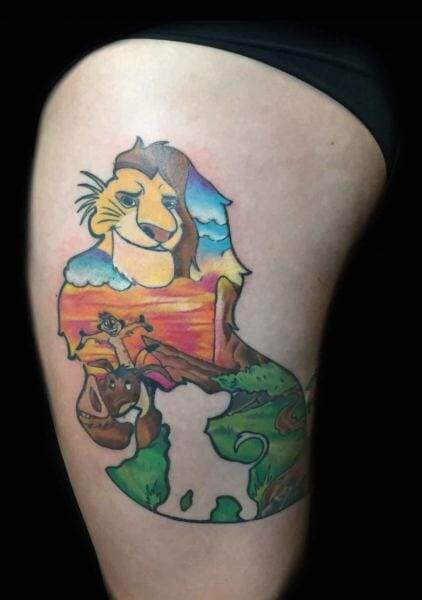
Why Watercolor Tattoos are Here to Stay in the World of Body Art
In conclusion, watercolor tattoos have quickly gained popularity in the world of body art for their unique aesthetic and ability to create stunning works of art on the skin. They offer a softer and more ethereal alternative to traditional tattoos, with their fluid lines and translucent colors. Watercolor tattoos can be customized to fit any style or preference, making them suitable for a wide range of designs.
While watercolor tattoos have their pros and cons, they continue to captivate tattoo enthusiasts with their vibrant colors and dreamy appearance. As more skilled tattoo artists specialize in this style and develop new techniques, the popularity of watercolor tattoos is only expected to grow.
Watercolor tattoos offer a unique way to express yourself and showcase your personality. Whether you are drawn to delicate florals or bold abstracts, watercolor tattoos can be adapted to suit your individual style and preferences. They allow you to wear your personality on your skin and create a lasting piece of art that is uniquely yours.
In the ever-evolving world of body art, watercolor tattoos are here to stay. Their unique aesthetic and ability to create stunning works of art on the skin have captured the hearts of tattoo enthusiasts around the world. As more people discover the beauty and versatility of watercolor tattoos, it is clear that this trend is not going away anytime soon. So if you’re looking for a tattoo that is vibrant, artistic, and truly one-of-a-kind, consider getting a watercolor tattoo.

